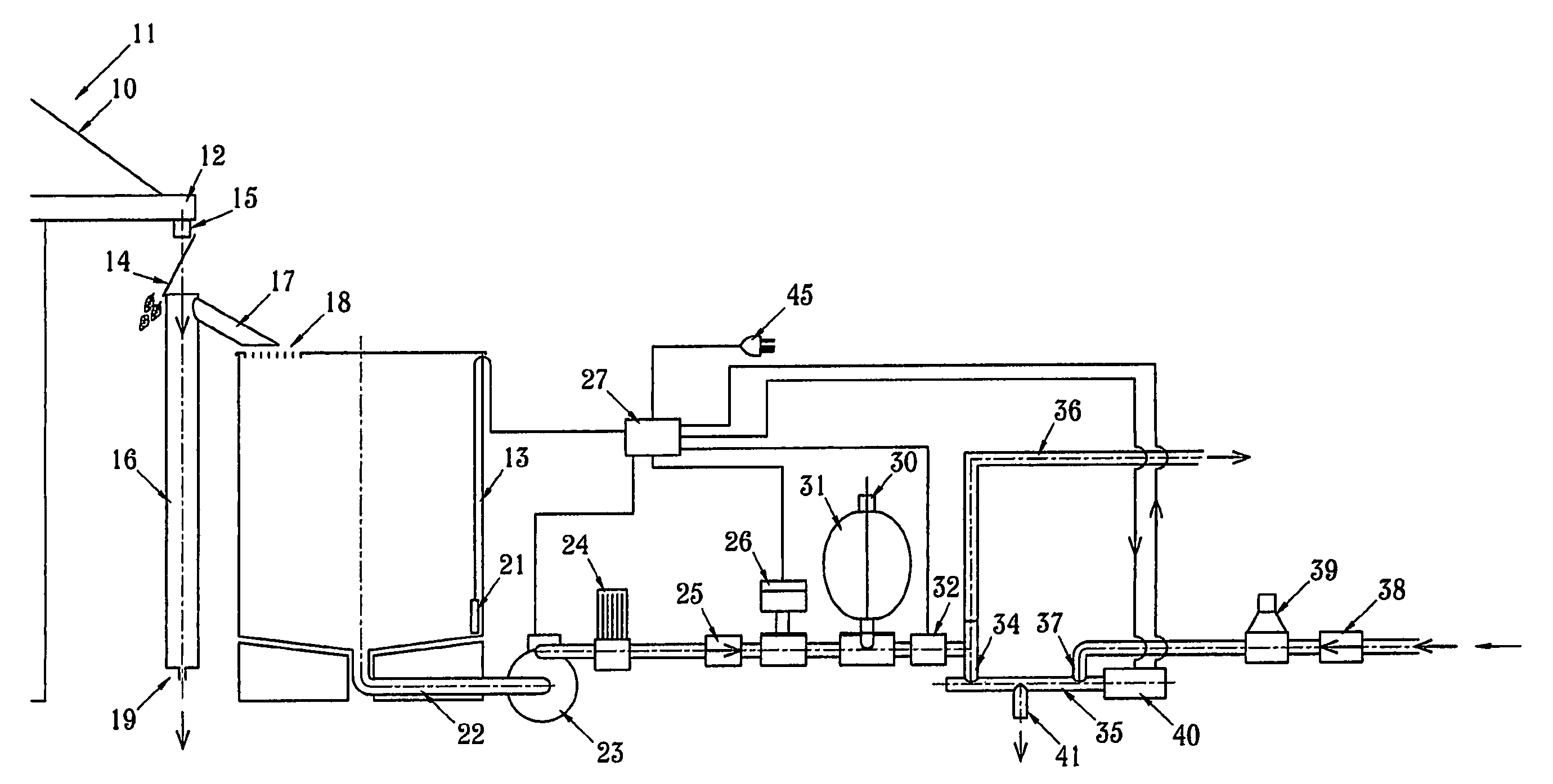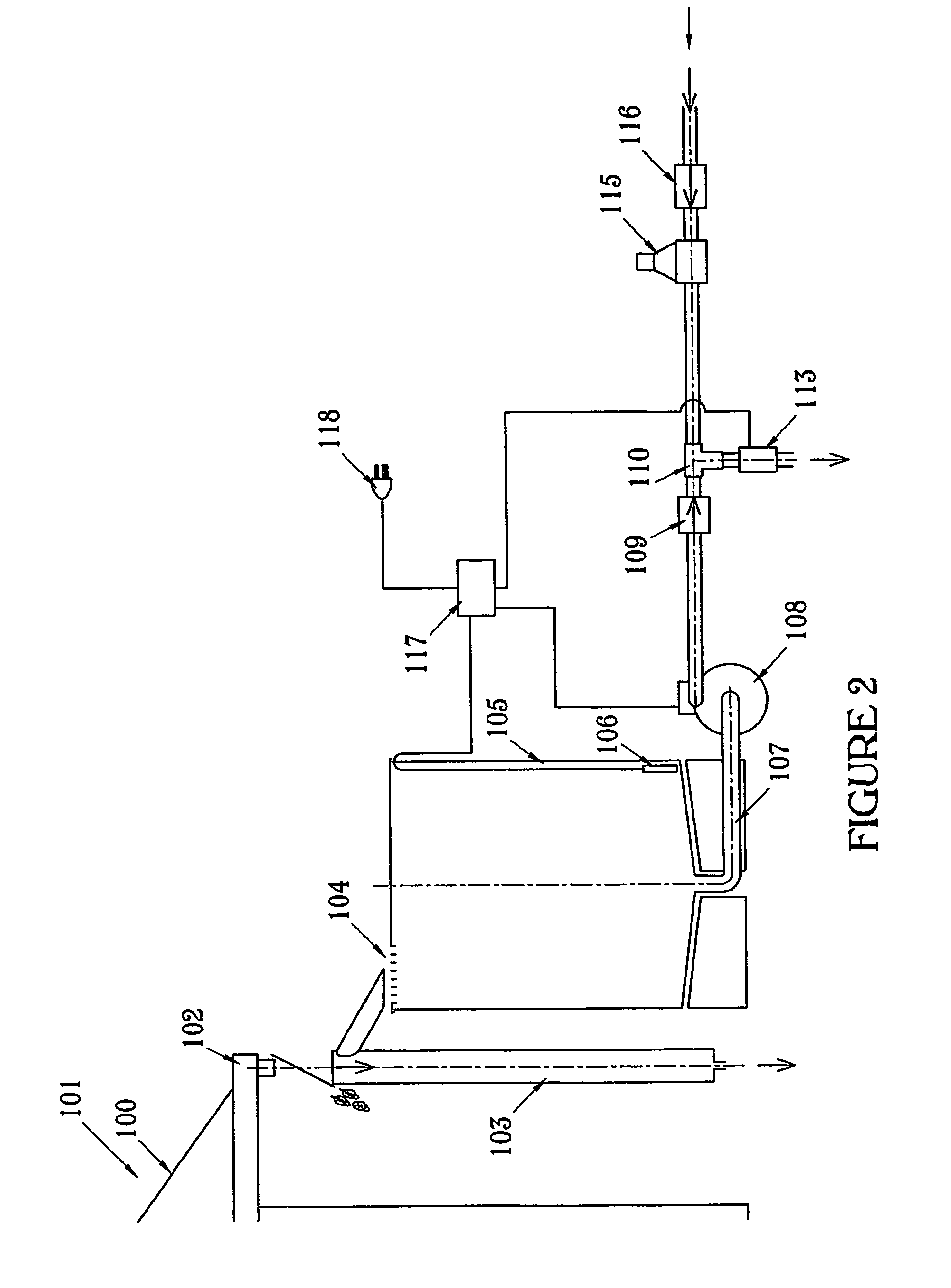Supplying water to a reticulation system from different sources
a technology of reticulation system and water supply, which is applied in the direction of liquid transfer device, machine/engine, process and machine control, etc., can solve the problems of inability to supply water to buildings, discourage rainwater collection in urban areas, etc., and achieve the effect of preventing water contamination and upstream cross contamination of mains water
- Summary
- Abstract
- Description
- Claims
- Application Information
AI Technical Summary
Benefits of technology
Problems solved by technology
Method used
Image
Examples
Embodiment Construction
[0084]With reference to FIG. 1 there is shown a diagrammatic view of the first preferred embodiment. Rain water falls on the roof 10 of a building 11, flows into the gutter 12 and collects in the water tank 13. Coarse debris is prevented from entering the water tank 13 by an angled debris screen 14 which filters water flowing out of gutter spout 15. The water then enters a first flush system 16. The first flush system 16 takes the initial volume of water discharged from the roof 10 and incorporating particulate matter and any residue on the roof 10. In its simplest form the first flush system 16 includes a container that holds a volume of water and has a small discharge outlet 19. When the container has filled overflow passes through the spout 17 into the water tank 13 via the insect screen 18.
[0085]The water tank 13 has a water sensor 21 which has a single level device with hysteresis (or two or three level devices). Water is drawn from the water tank 13 via the outlet pipe 22 to t...
PUM
 Login to View More
Login to View More Abstract
Description
Claims
Application Information
 Login to View More
Login to View More - R&D
- Intellectual Property
- Life Sciences
- Materials
- Tech Scout
- Unparalleled Data Quality
- Higher Quality Content
- 60% Fewer Hallucinations
Browse by: Latest US Patents, China's latest patents, Technical Efficacy Thesaurus, Application Domain, Technology Topic, Popular Technical Reports.
© 2025 PatSnap. All rights reserved.Legal|Privacy policy|Modern Slavery Act Transparency Statement|Sitemap|About US| Contact US: help@patsnap.com



